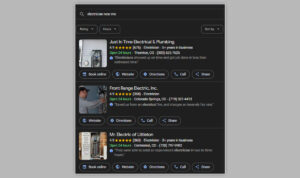Growing an affiliate blog can be a rewarding journey, but it takes the right strategies to see real results.
Whether you’re new to affiliate marketing or looking to boost your current efforts, these tips will help you maximize your blog’s potential.
Let’s dive into the top 10 strategies to effectively grow your affiliate blog.
-
Table of Contents
Key Takeaways
1. Embed Affiliate Links into Your Blog Posts
2. Use Paid Advertising
3. Build an Email List
4. Create a Resource Page
5. Make YouTube Videos
6. Sharing Affiliate Links on Social – Not the best idea
7. Write Product Reviews and Tutorials
Reviews
Tutorials
8. Offer Coupons & Leverage Affiliate Promotions
9. Present Giveaways
10. Network with Affiliate Marketers
Conclusion
Frequently Asked Questions
What is the best way to make money with affiliate marketing?
How does affiliate marketing work?
How do affiliate marketers find clients?
Do I need a blog to be an affiliate marketer?
What are some common mistakes in affiliate marketing?
How can I improve my affiliate marketing strategy?
Is it necessary to disclose affiliate links?
Can I use paid advertising for affiliate marketing?
Key Takeaways
-
Embedding affiliate links in your blog posts can significantly increase your earnings.
-
Using paid advertising can help you reach a wider audience quickly.
-
Building an email list allows you to directly connect with your audience and promote your affiliate links.
-
Creating a resource page can provide value to your readers and promote multiple affiliate products.
-
Networking with other affiliate marketers can open up new opportunities and strategies.

1. Embed Affiliate Links into Your Blog Posts
Adding affiliate links to your blog posts is a great way to earn money.
It’s simple and effective.
Here are some easy ways to do it:
-
Add links directly in the content.
-
Include a button with a Call-To-Action (CTA) at the end of the post or after describing a specific product.
-
Compare similar affiliate products with tables.
-
Use single product tables.
-
Create a list of affiliate products.
Example from the FractalMax Blog: The “Try AWeber Now” in red is an affiliate link. The affiliate disclosure is at the top of the post to inform readers. This is how you build trust.

2. Use Paid Advertising
Using paid ads is a powerful way to promote your affiliate links. Paid ads allow you to target specific audiences, helping you reach people who are most likely to buy your products.
This can be done through various platforms like:
-
Google Ads
-
Facebook Ads
-
Bing Ads
-
Social networks that offer paid advertising options.
The main downside is the cost. You’ll be spending money to get leads, which can reduce your profit margins. It’s important to calculate whether the cost of the ads is worth the potential earnings from the affiliate commissions.
Paid social media advertising is another great option.
For example, Facebook Ads lets you target users based on specific demographics and interests. This means you can show your ads to people who are more likely to be interested in what you’re promoting.

3. Build an Email List
Building an email list is a powerful way to grow your affiliate blog. Affiliate marketers who use email marketing earn 66.4% more than those who don’t.
If you’re not using this strategy, you’re missing out on a lot of potential income.
Here are a few reasons why building an email list is so effective:
-
You control this marketing channel.
-
You can talk directly to your audience.
-
You can nurture and educate your audience over time.
-
It’s not affected by algorithm changes.
-
It’s not affected by changing ad costs.
To start, offer a lead magnet like an ebook or guide to capture email addresses from your website visitors. This is a great way to get people to share their information with you.
Once you have a list of subscribers, create a series of emails that promote relevant products or services.
Make sure to include affiliate links in these emails to boost your earnings.
4. Create a Resource Page
A resource page is a curated list of tools or products that your readers will find useful. This is a great way to recommend affiliate products.
Focus on making honest recommendations instead of just listing the highest-paying offers.
To make your resource page effective, follow these tips:
-
Make it easy to find on your homepage or about page.
-
Explain why you recommend each tool or product.
-
Highlight the pros and cons of each recommendation.
-
Include links to more detailed reviews if you have them.
-
Add a clear call-to-action button for each tool or service.
By creating a helpful resource page, you can guide your audience to the best tools and products, making their journey smoother and more enjoyable.
5. Make YouTube Videos
Creating YouTube videos is a fantastic way to grow your affiliate blog. People love watching videos because they can see the product in action and get a better understanding of it.
YouTube is perfect for long-form product reviews and tutorials.
Here are some types of videos you can make to boost your affiliate conversions:
-
Single product reviews: Focus on one product and go in-depth about its features and benefits.
-
Roundup reviews: Compare multiple products in the same category and highlight the pros and cons of each.
-
Product unboxing: Show the unboxing experience and first impressions of a product.
-
Buyer’s guides for beginners: Help newbies understand what to look for when buying a product.
-
“1 Year Later” reviews: Share your long-term experience with a product after using it for a year.
Don’t forget to add your affiliate links in the video descriptions.
This way, viewers can easily find and purchase the products you recommend. You can also create a comprehensive guide on your niche, similar to what FractalMax Hub does, and share useful tips and tricks.
This not only helps your audience but also builds trust and credibility.
6. Sharing Affiliate Links on Social – Not the best idea
Social media is a powerful tool to promote your affiliate links. It allows you to reach a wide audience quickly and for free.
Posting affiliate links directly on social media can sometimes lead to account restrictions or bans.
Instead, focus on sharing valuable content that naturally incorporates your links.
Engage with your audience and build a community around your niche.
Here are some tips to get the most out of your social media efforts:
-
Create Engaging Posts: Make your posts interesting and fun. Use images, videos, and catchy captions to grab attention.
-
Add Links in Bios and Captions: Place the link of your Hub or Website in your profile bio or directly in the post captions.
-
Use Stories and Live Videos: Platforms like Instagram and Facebook have stories and live video features. Use these to talk about your affiliate products.
-
Join Relevant Groups: Participate in groups related to your niche. Share your links when it’s appropriate and helpful.
-
Schedule Your Posts: Use tools to schedule your posts at the best times for your audience.
Secure your spot for the free training to learn how to launch your own affiliate marketing business in 7 days flat! Even if you’re starting from zero. It’s a done-for-you system (not a course!)
7. Write Product Reviews and Tutorials
Writing product reviews and tutorials is a powerful way to grow your affiliate blog. Online reviews can greatly influence buying decisions.
When you write reviews for affiliate products, you reach people who are already thinking about buying the item.
Reviews
Reviews are articles or videos where you share your opinion about a product or service.
A good review tells a story that connects with readers.
It should share helpful information about your experience, the features of the product, and your final recommendation.
Tutorials
Tutorials go well with reviews. If you can show how your affiliate product works, do it. Start from the beginning and go step-by-step.
Break the article into simple steps, add images, and be as clear as possible. Don’t forget the important details.
8. Offer Coupons & Leverage Affiliate Promotions
People love a good deal, and offering coupons and discounts is one of the best affiliate marketing strategies to increase sales and conversions.
You can offer coupons in a few different ways:
-
Add a banner on your site with a coupon code
-
Send out coupon codes to your email list
-
Post coupons on social media
Coupons are a great way to create a sense of urgency and encourage people to buy a product before it goes back to full price.
Consider collaborating with brands to provide exclusive discounts for your audience. This not only drives traffic but also builds credibility for your affiliate partnerships.
9. Present Giveaways
People love free stuff. By giving away a product or service, you’re not only attracting potential customers, but you’re also building goodwill and brand awareness.
Of course, there’s a catch. Giveaways only work if you present something valuable. If you’re just giving away a bunch of junk, people will see right through it, and your efforts will result in nothing.
Make sure you’ve got something worth giving before you start your giveaway. This will ensure that people are genuinely interested and will participate.
Here are some steps to run a successful giveaway:
-
Choose a valuable prize that your audience will love.
-
Set clear rules and guidelines for participation.
-
Promote your giveaway on social media, your blog, and through email.
-
Announce the winner and follow up with all participants.
10. Network with Affiliate Marketers
Networking with other affiliate marketers can open up a world of opportunities for your blog.
Building relationships with experienced marketers can introduce you to new strategies and help you improve your current ones.
You can find affiliate marketing groups on Facebook or LinkedIn, or join forums and online communities dedicated to this field.
Don’t hesitate to reach out and connect with others.
Here are some steps to get started:
-
Join affiliate networks where you can offer your program to many affiliates.
-
Attend industry events and webinars to meet like-minded individuals.
-
Participate in online discussions and share your experiences.
By actively engaging with the community, you’ll not only learn from others but also establish yourself as a valuable member of the affiliate marketing world.
Connecting with other affiliate marketers can open doors to new opportunities and insights.
By sharing experiences and strategies, you can learn what works and what doesn’t. Ready to take your affiliate marketing to the next level?
Visit our website to discover how you can launch your own affiliate business in just 7 days!
Conclusion
Growing your affiliate blog effectively takes time, effort, and the right strategies. By following the tips we’ve shared, you can boost your traffic, engage your audience, and increase your earnings.
It’s all about providing value to your readers and building trust. Keep experimenting with different techniques,
stay updated with the latest trends, and don’t be afraid to try new things.
With dedication and persistence, your affiliate blog can become a successful and profitable venture.
Happy blogging dear affiliate!
Laurence
Frequently Asked Questions
What is the best way to make money with affiliate marketing?
The best way to make money with affiliate marketing is by choosing the right products that your audience will love and trust.
It’s important to write honest reviews and place affiliate links where they are easy to find.
How does affiliate marketing work?
Affiliate marketing works by promoting products through various channels like blogs, social media, and email lists.
When someone buys a product through your affiliate link, you earn a commission. Is a simple model!
How do affiliate marketers find clients?
Affiliate marketers find clients by building a strong online presence and engaging with their audience. They use social media, email marketing, and SEO to attract potential customers.
Do I need a blog to be an affiliate marketer?
No, you don’t need a blog to be an affiliate marketer. You can use social media, YouTube, or even email marketing to promote your affiliate links.
What are some common mistakes in affiliate marketing?
Some common mistakes include not understanding the products, not disclosing affiliate links, and not engaging with your audience. It’s important to be honest and transparent with your followers.
How can I improve my affiliate marketing strategy?
You can improve your strategy by knowing your audience, choosing the right products, and using multiple channels to promote your links. Regularly updating your content and engaging with your audience also helps.
Is it necessary to disclose affiliate links?
Yes, it’s necessary to disclose affiliate links. Being transparent builds trust with your audience and complies with legal requirements.
Can I use paid advertising for affiliate marketing?
Yes, you can use paid advertising to promote your affiliate offers but never run paid ads with affiliate links. This can help you reach a larger audience and increase your chances of making sales.
Source: fractalmax.agency



